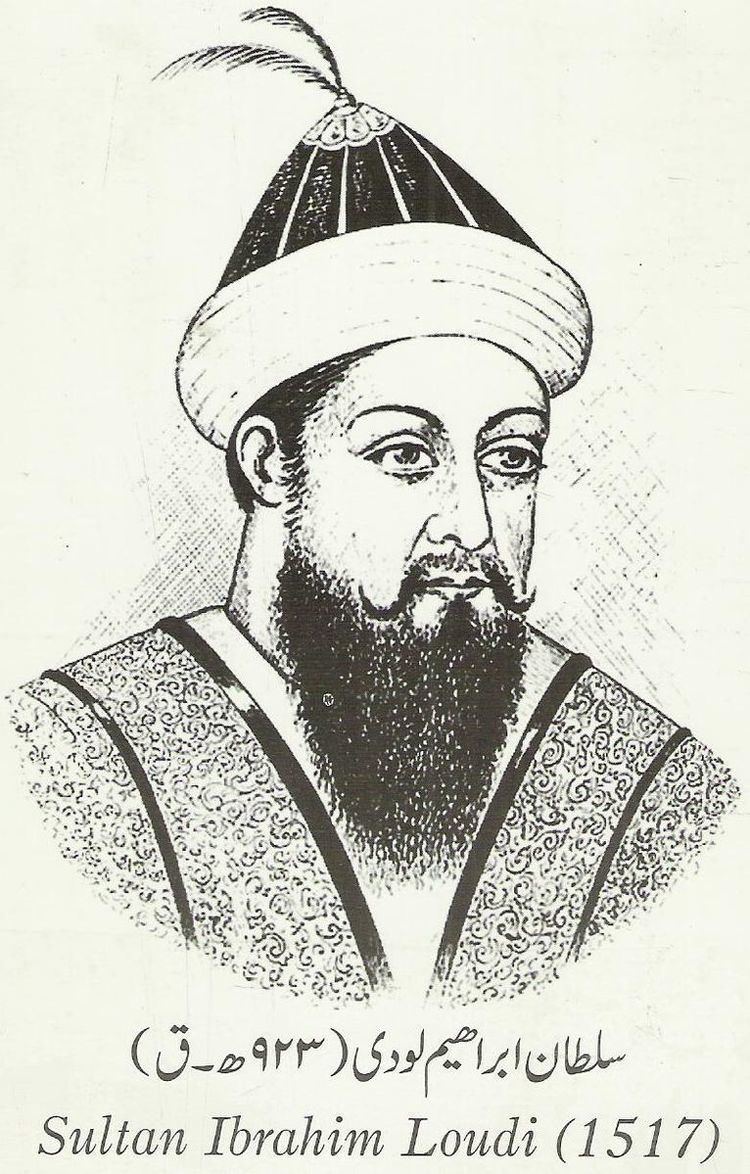Type Tomb | ||
 | ||
Location Tehsil office, Panipat, Haryana, India Architectural Indo-Islamic architecture Address Tehsil Camp Road, Devi Mandir Area, Tehsil Camp, Panipat, Haryana 132103 Hours Open today · 6AM–8PMFriday6AM–8PMSaturday6AM–8PMSunday(Holi)6AM–8PMHours might differMonday(Holi)6AM–8PMHours might differTuesday6AM–8PMWednesday6AM–8PMThursday6AM–8PM Similar Kabuli Bagh Mosque, Gujri Mahal, Madhogarh Fort - Haryana, Firoz Shah Palace Complex, Hemu's Samadhi Sthal | ||
Ibrahim lodhi s tomb and bab e faiz gate exploring heritage at panipat episode 3
Ibrahim Lodhi's tomb is the tomb in Panipat (Haryana, India) of the Ibrahim Lodhi, Sultan of the Lodi dynasty of Delhi Sultanate.
Contents
- Ibrahim lodhi s tomb and bab e faiz gate exploring heritage at panipat episode 3
- Tomb
- History
- Architecture
- Bu Ali Shah Qalandars Dargah
- Kabuli Bagh Mosque
- Restoration and Relocation
- References
Tomb
Ibrahim Lodhi's tomb is often mistaken to be the Shisha Gumbad within Lodi Gardens Delhi. Rather Ibrahim Lodi's tomb is actually situated in near the tehsil office in Panipat, close to the Dargah of Sufi saint Bu Ali Shah Qalandar.
History
Ibrahim Lodi (Pashto: ابراهیم لودي, Urdu: ابراہیم لودی;) became the Sultan of Delhi in 1517 after the death of his father Sikandar. He was the last ruler of the Lodi dynasty, reigning for nine years between 1517 until being defeated and killed at the battle of Panipat by Babur's invading army in 1526, giving way to the emergence of the Mughal Empire in India.
Ibrahim was an ethnic Pashtun. He attained the throne upon the death of his father, Sikandar, but was not blessed with the same ruling capability. He faced a number of rebellions. The Mewar ruler Rana Sangram Singh extended his empire right up to western Uttar Pradesh and threatened to attack Agra. There was rebellion in the East also. Ibrahim Lodi also displeased the nobility when he replaced old and senior commanders by younger ones who were loyal to him. His Afghan nobility eventually invited Babur to invade India.
In 1526, the Mughal forces of Babur, the king of Kabulistan (Kabul, Afghanistan), defeated Ibrahim's much larger army in the Battle of Panipat. Ibrahim was killed during the battle at Panipat and his tomb now lies there. It is estimated that Babur's forces numbered around 25,000–30,000 men and had between 20 to 24 pieces of field artillery. Ibrahim Lodi had around 30,000–40,000 men along with at least 100 elephants . After the end of Lodhi dynasty, the era of Mughal rule commenced .
Architecture
It is a simple rectangular structure on a high platform approached by a flight of steps.
Bu Ali Shah Qalandar's Dargah
Close to the Ibrahim's tom is the Dargah of Sufi saint Bu Ali Shah Qalandar.
Kabuli Bagh Mosque
Kabuli Bagh Mosque was built by Babur to celebrate success over Ibrahim Lodhi is located 2 km away in Panipat.
Restoration and Relocation
In 1866, the British relocated the tomb during construction of the Grand Trunk Road and renovated it with an inscription highlighting Ibrahim Lodhi’s death in the Battle of Panipat.
Another memorial of some kind, however, appears to have existed which used to form a place of pilgrimage for the people of Gwalior since Vikramaditya the last Raja of the old dynasty of Gwalior, fell in the same battle. This memorial, according to Alexander Cunningham, was destroyed when the Grand Trunk Road was made.
